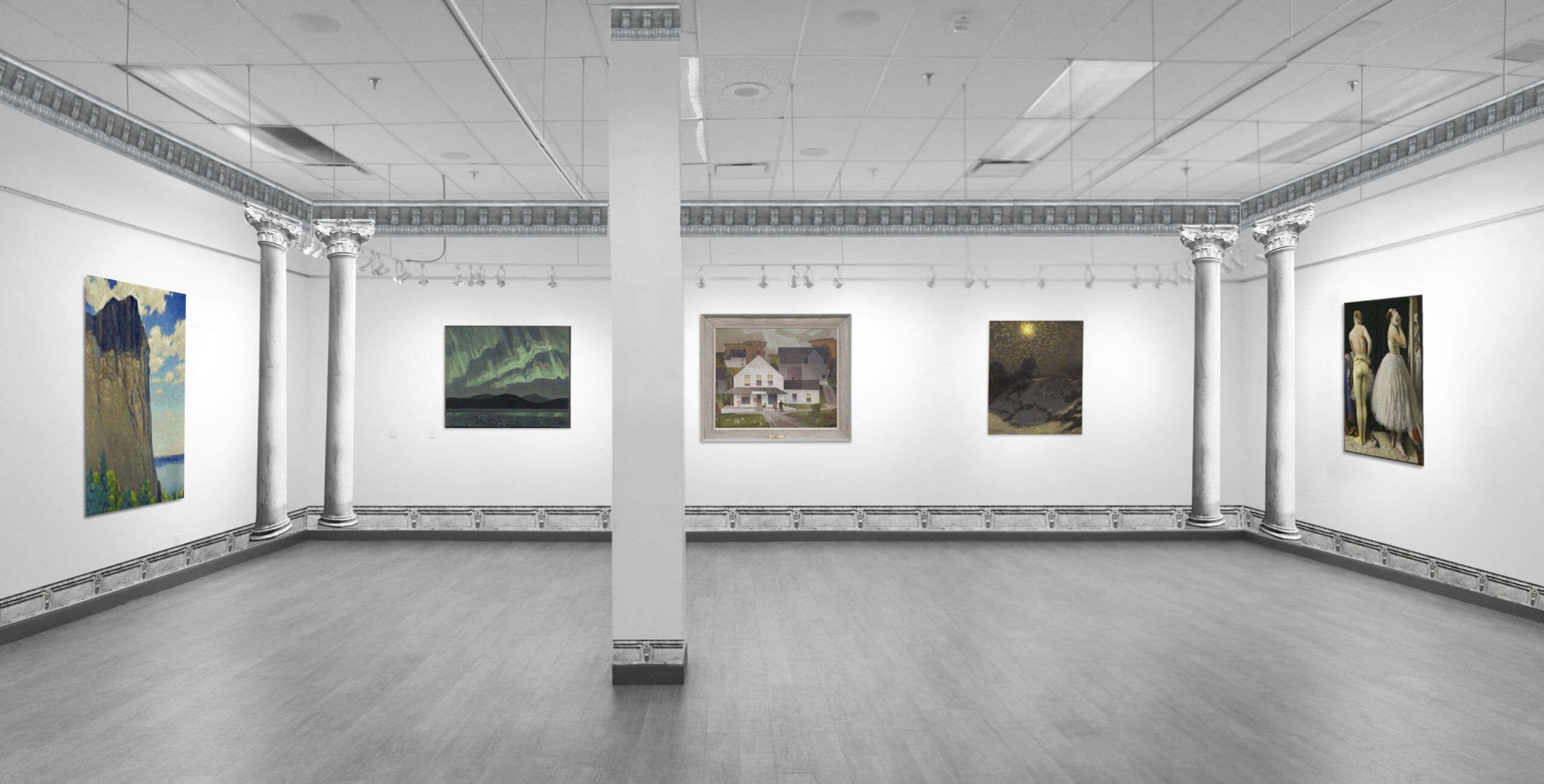Bridging Eras & Galleries: The CNE & AGO

About the Exhibit
The CNE Association has a rich history in Canadian art, dating back to the late 19th century. Originating at the Crystal Palace, CNEA’s exhibitions transitioned to purpose-built galleries by 1902. These galleries showcased significant works, including those of the Group of Seven, and helped form the Art Gallery of Ontario’s foundational collection.
This year’s exhibition at CNEA’s Withrow Common Gallery Bridging Eras and Galleries: The CNE and AGO, in collaboration with the Art Gallery of Ontario, celebrates this legacy with about 40 artworks and accompanying catalogues that map the origins of the CNE exhibits.
Open to public
Time:
August 16th – September 2nd, 2024
Open daily
12 pm – 10 pm
Location:
Withrow Common Gallery
More info
The Canadian National Exhibition Association (CNEA) has very deep roots in the fabric of Canadian art history. CNEA’s first art exhibitions occurred in the late 19th century, appearing at shows staged in the Crystal Palace located on what is now named Exhibition Place concurrent with what was then called the annual Toronto Industrial Exhibition. The Crystal Palace burned to the ground in 1906, but the tradition of procuring and exhibiting significant art works had already been transitioned to other buildings on site.
The Board of the Exhibition recognized the need to have dedicated art exhibition space and authorized the construction of an art gallery that opened in 1902. That first gallery was situated exactly where the CNEA’s current Withrow Common Gallery now stands. Partly due to concerns over the flammability of the initial gallery’s wooden structure and also wishing to have a larger art exhibition space, a second gallery was constructed with its premiere art exhibition opening at the 1905 annual exhibition. The first gallery transitioned to what was called the Graphic Art and Photography Building, while the larger second gallery became the centrepiece for ongoing art exhibitions over the next six decades.
The CNEA accumulated hundreds of substantial artworks sourced primarily from Europe, the United States and emerging Canadian artists. The Ontario Society of Artists, founded in 1872, worked closely with CNEA staff to curate the exhibitions. The Canadian National Exhibition (“CNE”), attracting crowds of approximately 1.5 million people annually, became the showcase for these displays. The catalogues of these exhibitions, stored in the CNEA archives, map, for example, the rise of the Group of Seven. Two Group of Seven members even illustrated annual CNE posters. It was a tradition that each CNE would have a theme and an illustrated poster to depict that theme.
The CNEA’s art galleries emerged as bastions of creativity amidst a rapidly evolving urban landscape. The 1905 gallery, as one of the first premier art galleries in the city, served as a crucible for artistic expression. From their inception, Withrow Common Gallery’s predecessors embraced diverse artistic movements, exhibiting works that challenged conventions and sparked dialogue.
The CNEA galleries became synonymous with the celebration of Canadian art as it was showcased alongside the important works of international art. Over a few decades a permanent art collection emerged including the works of iconic Canadian artists such as of the Group of Seven’s A.Y. Jackson, L. Harris, F. Carmichael and J.E.H. MacDonald to name a few, as well as many American and European artists.
In the mid-1960’s, William J. Withrow served both as the Executive Director of the Art Gallery of Toronto (now known as the AGO) and on the Board of the CNEA. He proposed that the CNEA’s extensive art collection be transferred to the AGO both for exhibition and preservation purposes.
The CNEA decided to transfer the ownership of 340 artworks to the AGO. By way of an agreement executed between the CNEA and the AGO in 1965 and a second agreement in 1966, artworks including sketches, etchings, paintings, and sculptures were transferred to the AGO. While ownership rights were conveyed to the AGO, the CNEA’s right to exhibit the collections was preserved in these agreements. These artworks are substantial and considered foundational to the AGO’s overall collection of European and Canadian art. 1966 was the year the museum changed its name to the Art Gallery of Ontario in an effort to gain further provincial funding for the institution.
After the transfer of the collection, the CNEA’s Art Gallery was no longer used for art exhibiting and was eventually demolished in 1973. For many, the decades of art promotion at the CNEA was forgotten, for many more, never known. The Queen Elizabeth Building was constructed in 1956. To make way for its construction, the 1902 Graphic Art and Photography Building was demolished. In 2016, space became available at the Queen Elizabeth Building, ironically almost exactly along the footprint of the Graphic Art and Photography Building. The CNEA decided to rekindle its art curation and established the Withrow Common Gallery.
With this year’s exhibition we want to demonstrate CNEA’s art legacy by sampling some of the works and catalogues that comprise the AGO’s CNEA collection and its exhibition history. Our objective is to educate on the CNEA’s and AGO’s collective history related to the CNEA’s foundational collection.
